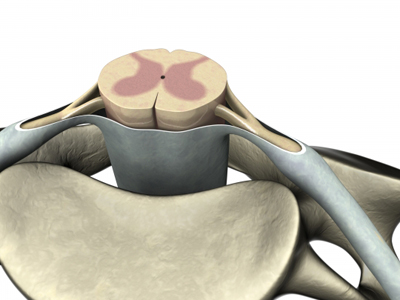Syndrome of the spinal cord – SSM – Spinal Cord Injury – Paralysis of the upper limbs
Description of the spinal cord syndrome
Syndrome of the spinal cord (SSM) It is a type of incomplete spinal cord injury. When SSM is marked damaged nerve fibers, which pass signals from the brain to other bodies. This affects the motor function of hands, and in some cases, Foot, and it can be felt as numbness and loss of control of movements.

Causes of the syndrome of the spinal cord
The appearance of the syndrome is caused by damage to the central part of the spinal cord. It can can cause:
- Siringomielija (CVIS, fistula) – cyst in the spinal cord;
- Poor blood circulation in the spinal cord;
- Bleeding in the spinal cord;
- Edema (tumor, created by fluid in connective tissue).
The most common causes of damage are:
- Trauma (eg, Car Crashes, sports injury, drop)
- Degenerative conditions of the spine (often occurs in the elderly);
- Spinal injuries at birth.
Syndrome spinal cord may also be associated with:
- The structural features of the spine;
- Tumors inside the spinal cord.
Risk factors
Factors, which increase the risk of spinal cord syndrome:
- Paul: male;
- Age: more 50 (in combination with arthritis neck and fall);
- Autoimmune disorders (eg, multiple sclerosis)
- Former deviation (eg, a narrow spinal canal, spinal cord disease, dysfunction);
- Classes are certain sports (eg, fight, diving).
Symptoms of spinal cord
The presence of the following symptoms are not always indicative of a spinal cord syndrome. These symptoms may be caused by other disorders:
- Inability to lift arms and hands completely, or numbness and tingling;
- The difficulty with fine motor control (eg, when buttoning a shirt);
- Weakness of the muscles in the legs, difficulty walking;
- Loss of bladder control.
If SMS appears due to injury, Symptoms usually appear rapidly. In other cases, symptoms can appear gradually.
Diagnostics
To diagnose the disorder need to make a physical inspection. In addition to this can be nznachen neurological examination, which includes an assessment:
- Reflex;
- Mental state.
They can be assigned to the following tests:
- MRT – test, which uses magnetic waves, to take photographs of structures in the spinal cord;
- CT scan – type of X-ray, which uses computer, to make pictures of the spinal cord;
- Myelogram – test, which uses a special paint, to view the spinal cord and the area, surrounding;
- X-ray of the spinal cord.
Treatment
If the syndrome arose due to injury, It may take several months to recover. Treatment may also include:
Nonsurgical treatment
In most cases, surgery is required. Often, treatment includes:
- Immobilization of the neck;
- Steroids;
- Physical and occupational therapy.
Surgical intervention
Surgery is needed, if there is a significant compression of the spinal cord fibers. Usually the operation is performed after the period of recovery after injury.
Prevention
To reduce the risk of spinal cord injury, you must take the following steps:
- Avoid diving, If the depth is not known;
- When traveling in a car to wear seat belt;
- Using the safest methods and necessary equipment when playing sports;
- Observe safety rules when using a firearm.
